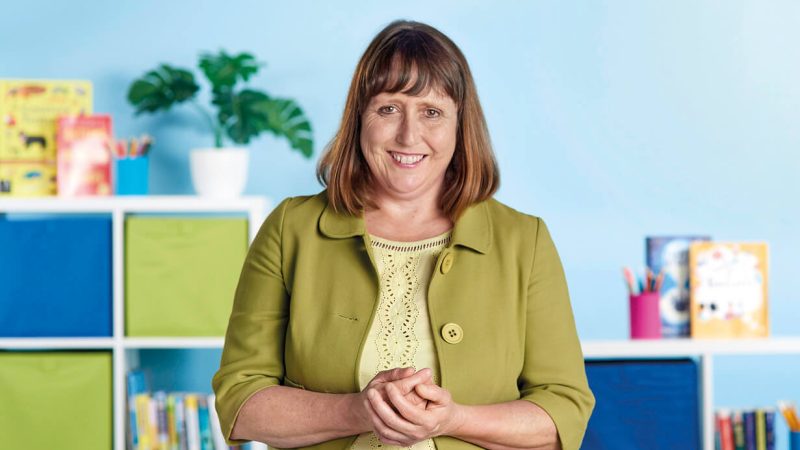Smart Schools Tackle Parental Engagement By Tapping Into Technology

In a world where we live our lives through our phones, smart schools are harnessing them as a way to engage with parents, as Kelly Clark has been finding out…
- by Kelly Clark

Walking into a school office or picking up the phone to pose a query to a teacher can be daunting for parents. That age-old feeling of being in trouble when you’re sat waiting to speak with the head never seems to go away for some. So, what if they could simply stay within their comfort zone and have a relaxed chat over social media… with a goat?
That’s the direction Varndean School, a secondary in Brighton, has taken, setting up a Twitter account for its five pygmy goats. “I thought it would be fun,” says Hilary Goldsmith, director of finance and operations. “It also shows students that social media is not just all about getting followers and Likes, or all about personality contests. It’s a really fun way of interacting with our community.”
The goats arrived in September as a pastoral support, nurturing good behaviour and teaching children how to take care of animals.
Now, the animals are given a voice over Twitter, where interaction is mainly with parents.
“We all know that conversation children often have when they get home, telling their parents they haven’t done anything all day. This way, parents can log into Twitter and see photos of their children interacting with the goats; that’s not something they would normally see as it wouldn’t make it onto our website or newsletter. They are also the children who would not generally be the headliners; they’re the quieter students, but this is a way of demonstrating what they are achieving.”
Recently launched is the hashtag #AskAlan where the school community can pose questions to Professor Alan T Goat – another light-hearted link back to the school. As well as encouraging conversation, the goats have inspired parents to get involved in raising money, which also creates a new link with the school which may not have otherwise been there.
“It’s certainly a fun way to engage with parents,” observes Hilary. “It’s about having a light-hearted interaction with them rather than the only communication they have from school being pleas for money or requests for help. It’s a constant stream which shows them we are accessible.”
What parents want
Social media is so important to Honywood School, in Essex, a full-time marketing and brand manager has been employed. Carol-Anne Frogley says: “We want to make sure we engage with parents fully and that they are involved as much as possible with the development of their children. We are really pushing social media as a promotional tool for the school.”
Platforms such as Twitter and Facebook are being used to showcase what the school and its students are getting up to, as well as a way of communicating information to parents in a format that suits them.
“What has been really successful is our coverage on social media of residential trips,” explains Carol-Anne. “We are able to post photos each day and our parents have really valued that opportunity to almost experience the trips alongside their children. It means parents can feel that little bit more engaged with what is going on. With Facebook, in particular, we are directing the content at our families. It’s a window into the school day and enables them to see what goes on.”
For the first time, the school has cancelled its traditional press advertising for open evening and is instead devoting a fraction of that budget to social media sponsored posts.
“After surveying parents, we were not convinced that enough would be picking up a local newspaper to warrant that spend. Instead, we are targeting the exact demographic we want to reach via Facebook advertising. That’s not a decision we have taken lightly, but it’s about acknowledging the world is moving forwards and giving people information on the platforms they want it.”
The school is also investing in a new website and has set up a YouTube channel to showcase learning in action to parents.
Moving forward with apps
Boswells School, in Essex, is among those looking to create their very own apps in future. Parents are already using the established, worldwide Show My Homework app, where they can log in to see what homework their child is set and their deadlines so they can provide appropriate support at home. But, ideas are being developed to move things further forward.
Cheryl Noble, assistant headteacher, says: “As a school, we are increasingly moving towards electronic communication with parents to keep them up to date on their child’s progress. The fantastic opportunities which smart technology brings allows us to communicate rapidly and frequently. It also reduces costs which, at a time when school funding is high on the agenda, is essential.”
While the apps are already in place to communicate a weekly headteacher’s bulletin as well as details of school events, timetables and achievement points, the school is keeping abreast of other opportunities to increase the ease of access to information so it is live and readily available.
Leon Brown, a maths tutor in Liverpool, has developed an app his parents and partner schools can use to offer appropriate support to students between lessons.
“It’s a great way of getting them involved in reinforcing the concepts I’ve taught. For example, one of my parents was able to explain percentages and ratios in relation to what they were buying on a shopping trip. Maths becomes a lot easier to understand when they are able to relate its concept to the real world. Parents are useful for doing the job of getting children to do this work.”
The app alerts the teacher to a child missing completion of exercises or specific difficulties they are having with a topic. The technology also produces visual reports on performance and can set tasks for parents and children to complete together socially.
“There are now more opportunities than ever for getting families to become more involved in their student’s learning. Learning shouldn’t be restricted to the classroom; reinforcement of learning should be encouraged through application to the real world as much as possible.”











